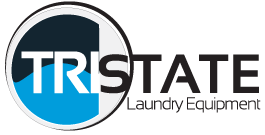Last month we discussed the different fuel source options for commercial boilers, showing the cost savings and other benefits of choosing natural gas or propane over other options. Obviously based on last month’s post, Tri-State Laundry Equipment prefers natural gas boilers, and we want to continue the boiler conversation focusing on what size natural gas boiler best fits your business. To determine this, we’re going to talk in terms of BHP (boiler horsepower), which is a boiler’s capacity to produce steam. One BHP is the amount of energy required to produce 34.5 pounds of steam per hour at pressure and temperature of 0 psig and 212 degrees Fahrenheit.
When I try to determine boiler need, I use two sources: first, a spec sheet from Unipress that provides finishing equipment technical specifications (all pieces of dry cleaning and laundry equipment have a BHP number), and second, years of experience. For instance, I know that a dry cleaning utility press is rated at 1 BHP as is a dry cleaning legger or any other dry cleaning press that uses steam to heat and steam emitted for finishing. Pants toppers with a form and emit steam to condition are rated at ¾ BHP, where form finishers which are any bag form that finishes dresses and tops and blows air and steam are rated at 2 BHP. I tend to rate puff irons at ¼ BHP regardless of whether they are single or triples because they don’t emit steam all the time, and they consume a very small amount when at rest.
We all have our own unique set of talents, and mine is knowing all these numbers off the top of my head. But for the remainder of the population, pressing equipment manufacturers provide a BHP number for all their laundry, shirt laundry, and dry cleaning pressing equipment as well as for dry cleaning machines and washers and dryers. Sometimes a little digging might be required, but this is an important number to know when outfitting a new plant or when purchasing a single piece of equipment simply for an upgrade. Once you have all your BHP numbers, figure in about 5% for header heat loss but be careful not to oversize unless the customer demands it. And when it’s time to replace your boiler, don’t simply replace it with your current size. Instead, run through this exercise to see if a larger size is necessary.
Determining your required boiler size can feel a bit complicated and overwhelming, but an experienced boiler system sales and design person can come up with a really close calculation. And of course, Tri-State Laundry Equipment is always here to help whether is it’s dry cleaning or laundry boilers or dry cleaning or laundry equipment.




No comments:
Post a Comment